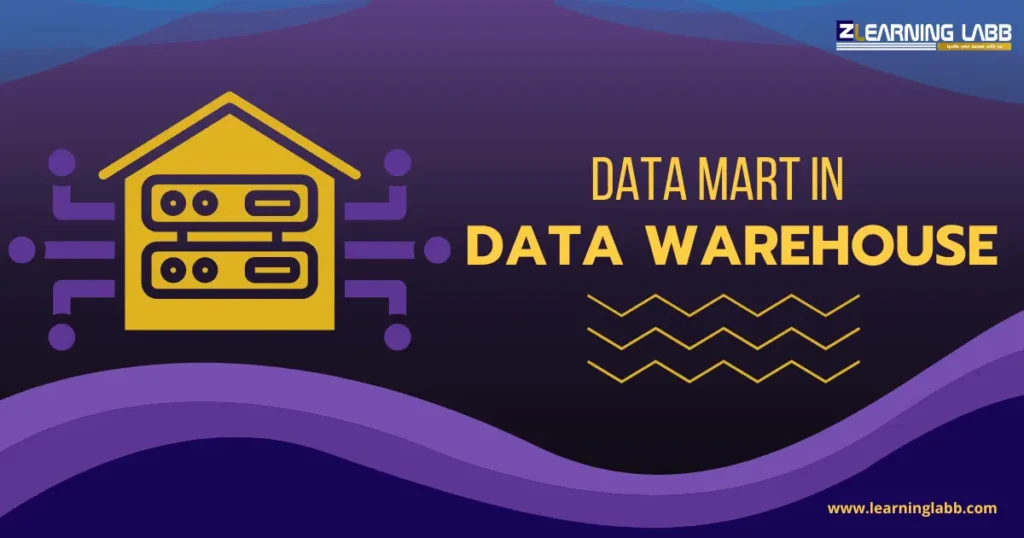Data Mart In Data Warehouse: Businesses rely heavily on data storage and analysis for decision-making, but managing vast amounts of information can be overwhelming. This is where data marts come in!
It may sound like a shop for data – which if you ask me, its kind of is -a data mart in data warehouse is a subset of a data warehouse designed to focus on a specific business function, department, or purpose. It makes data retrieval faster and more efficient for specific users. But how do you implement a data mart, and what are its benefits?
In this blog, we will cover the following:
- What is data mart in data warehouse?
- Features and purpose of data mart
- Steps in implementing data mart
- Difference between data warehouse and data mart
- Advantages and disadvantages of data mart
- Example of data mart in data warehouse
What is Data Mart in Data Warehouse?
A data mart in data warehouse is a smaller, focused section of a data warehouse designed for specific business needs. It stores relevant data for departments like marketing, sales, or finance, making data retrieval faster and more relevant.

What are the Features and Purpose of Data Mart?
Key features of data mart:
- Subject-oriented: Focuses on a single department or function.
- Smaller in size: Contains limited and relevant data.
- Faster query performance: Optimised for quick data access.
- Easy to manage: Requires fewer resources than a full data warehouse.
Data marts are an excellent way to deliver targeted, high-performance analytics to business users without overwhelming them with massive datasets. – Bill Inmon, Father of Data Warehousing.
Purpose of data mart:
The purpose of a data mart is to provide a focused and efficient way for business users to analyze data without being overwhelmed.
Key purposes of data mart include the following:
- Supporting specific business decisions with targeted data.
- Improving performance by reducing query times.
- Improving usability for non-technical users with simplified data access.
What are the Steps in Implementing Data Mart?
Implementing a data mart in data warehouse requires a structured approach that will enable smooth data integration and usability.
1. Define business needs
- Identify the purpose of the data mart.
- Determine the business function it will serve (e.g., finance, sales).
2. Select data sources
- Choose relevant databases, applications, or files.
- Maintaining data consistency across sources.
3. Design the data model
- Choose between star schema or snowflake schema for efficient data organization.
- Define relationships between tables.
4. Extract, Transform, and Load (ETL)
- Extract data from sources.
- Clean and transform data for consistency.
- Load data into the data mart.

Continue reading about data mart in data warehouse….
5. Implement data access tools
- Use SQL queries, dashboards, or BI tools for data access.
- Optimize indexing and partitioning for faster retrieval.
6. Test and validate
- Verify data accuracy and performance.
- Ensure users can retrieve required data efficiently.
7. Deploy and monitor
- Deploy the data mart for end-users.
- Continuously monitor for performance improvements.
What are the Advantages and Disadvantages of Data Mart?
Advantages:
- Faster data access: Since data marts are smaller, they allow quick query execution.
- Cost-effective: Lower storage and maintenance costs compared to full data warehouses.
- Easier management: Since they focus on a single department, they are easier to maintain.
- Improved decision-making: Provides relevant, well-structured data for business units.
Disadvantages:
- Limited scope: Covers only a specific function, not the entire business.
- Data redundancy: If not managed well, duplicate data may exist.
- Integration issues: Combining multiple data marts can be complex.
Data marts provide focused, relevant data but must be carefully managed to avoid redundancy.
Example of Data Mart in Data Warehouse
Let’s consider a real-world example of a data mart in data warehouse implementation:
Case Study: A retail company
A multinational retail chain wants to analyze sales trends for different stores. Instead of querying the entire data warehouse, they create:
- Sales data mart: Focused on transaction data, customer purchases, and trends.
- Marketing data mart: Contains campaign data, customer demographics, and advertisement performance.
By using separate data marts, different teams can efficiently access relevant information without dealing with unnecessary datasets.
Difference between Data Warehouse and Data Mart
A data warehouse is a central repository storing vast amounts of structured and unstructured data from multiple sources, used for in-depth analysis. A data mart, on the other hand, is a smaller, department-specific subset of the warehouse.
| Features | Data Warehouse | Data Mart |
| Scope | Enterprise-wide | Department-specific |
| Size | Large | Small |
| Data Sources | Multiple sources | Single/limited source |
| Processing Speed | Slower (complex queries) | Faster (simple queries) |
| Implementation Time | Longer | Shorter |
Simply put, a data warehouse provides a broad overview, whereas a data mart offers focused data and information.
How Ze Learning Labb (ZELL) Can Help?
If you’re looking to deepen your knowledge of data warehousing, business intelligence, and data analytics, check out courses from Ze Learning Labb (ZELL).
ZELL offers:
- Hands-on training in data warehouse design and implementation.
- Real-world case studies on data marts and business intelligence.
- Expert-led online courses with certifications.
Explore ZELL Courses Now!
On A Final Note…
A data mart in data warehouse is a game-changer for organizations looking for fast, focused, and efficient data access. Whether it’s sales, marketing, or finance, data marts enable teams to make informed decisions with minimal hassle.
By following the steps in implementing data mart, businesses can streamline their data strategy and improve analytics. However, careful planning is needed to avoid redundancy and integration challenges.
Contact us today to know more!





